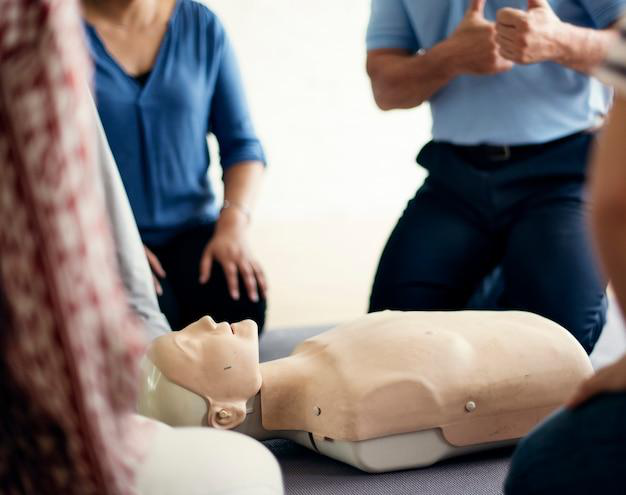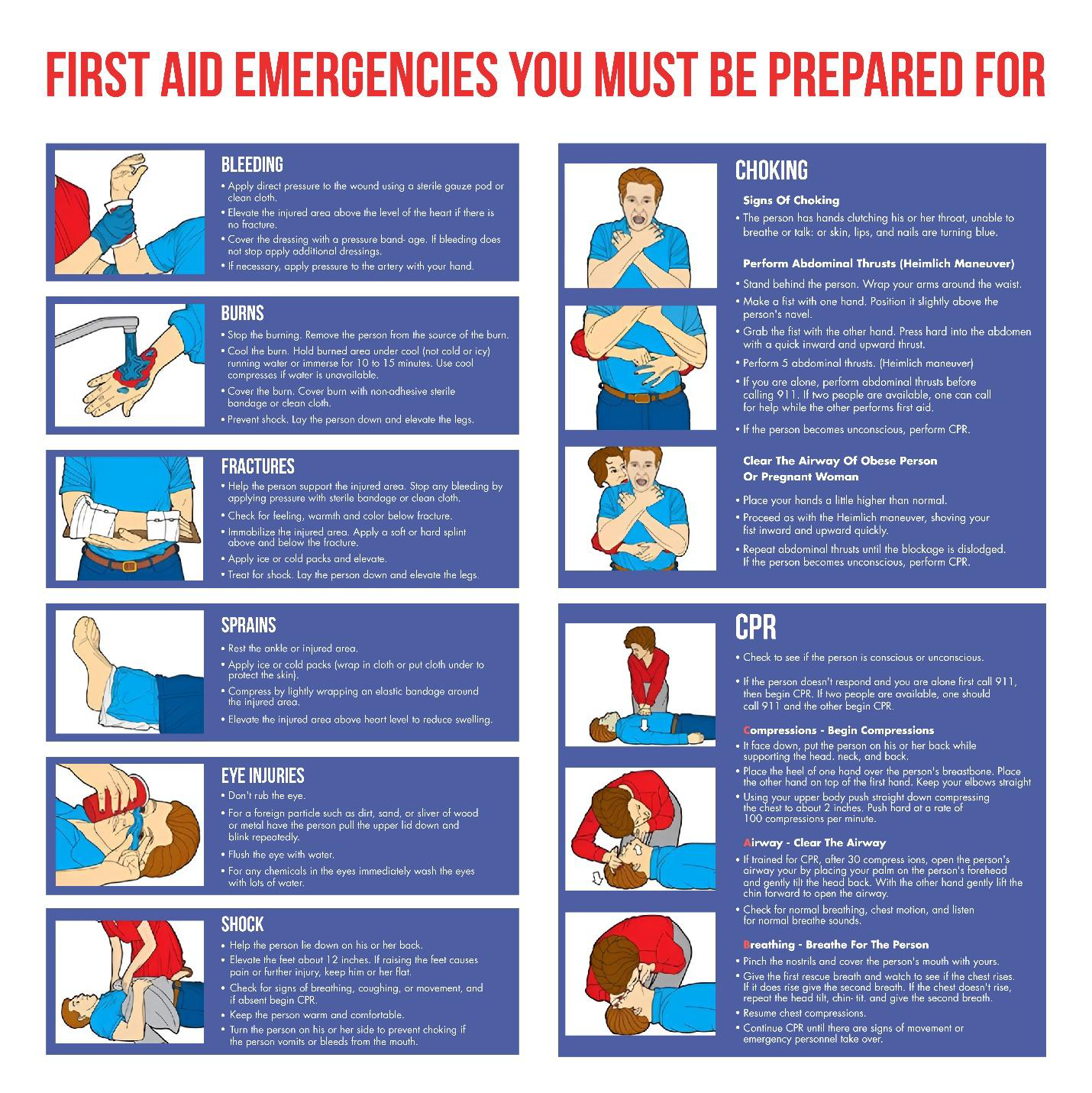Emergency first aid training has always been a critical component of workplace safety and public health. As we progress into the future, the field of first aid is rapidly evolving, thanks to technological advancements, innovative training methods, and the growing recognition of the importance of preparedness in life-threatening situations.
In this blog, we’ll explore the emerging trends and innovations shaping the future of emergency first aid training, with a particular focus on their implications for workplaces and public health in Canada.
The Evolution of Emergency First Aid Training
From Basic Knowledge to Advanced Skills
Historically, basic first aid training focused on providing individuals with the knowledge and skills necessary to address common injuries and medical emergencies.

Over time, the scope of first aid training has expanded to include more advanced techniques, such as cardiopulmonary resuscitation (CPR), automated external defibrillator (AED) use, and trauma management.
The Role of Technology in Enhancing First Aid Training
Technology has played a pivotal role in transforming emergency first aid training.
Let’s discuss some of the most promising innovations and trends that are shaping the future of emergency first aid training.
1. Virtual Reality (VR) and Augmented Reality (AR) in First Aid Training
Virtual Reality (VR) and Augmented Reality (AR) are revolutionizing the way emergency first aid training is conducted. These immersive technologies offer a realistic and interactive learning environment, allowing trainees to practice life-saving techniques in a controlled, simulated setting. This approach enhances the retention of knowledge and skills, making it easier for participants to apply what they’ve learned in real-life situations.
Benefits of VR and AR in First Aid Training
- Realistic Scenarios: VR and AR enable the creation of highly realistic emergency scenarios, such as cardiac arrest, severe bleeding, or choking. Trainees can practice their responses in a safe environment, building confidence and competence.
- Interactive Learning: These technologies provide an interactive learning experience, allowing trainees to engage with the content actively. This hands-on approach is particularly effective for retaining complex information and developing muscle memory.
2. Online and Hybrid Training Models
The COVID-19 pandemic accelerated the adoption of online and hybrid training models across various fields, including emergency first aid training. These models offer a flexible and convenient alternative to traditional in-person training, allowing individuals to learn at their own pace and from the comfort of their homes.

Advantages of Online and Hybrid Training
- Flexibility: Online and hybrid models provide the flexibility to complete coursework at any time, making it easier for individuals with busy schedules to obtain or renew their first aid certification.
- Accessibility: These models makeemergency first aid training accessible to people in remote areas, as they can participate in the training without the need to travel to a physical location.
- Cost-Effectiveness: Online training often costs less than traditional in-person courses, making it a more affordable option for individuals and organizations.
In Canada, online platforms offering confined space training and advanced first aid training evening courses in Surrey have become increasingly popular, providing flexible options for workers who need to meet safety compliance requirements.
3. First Aid Apps and Wearable Technology
The integration of mobile apps and wearable technology into emergency first aid training is another exciting development. These tools provide real-time guidance and support during emergencies, making it easier for individuals to administer first aid effectively.
First Aid Apps
First aid apps are designed to provide step-by-step instructions for various medical emergencies, from administering CPR to treating burns and fractures. These apps are especially useful in situations where professional medical help is not immediately available.
- Guided Instructions: First aid apps offer clear, easy-to-follow instructions that guide users through the steps of administering first aid. Some apps also include voice prompts and visual aids to enhance understanding.

- Resource Library: Many first aid apps include a comprehensive resource library, offering information on a wide range of medical conditions and treatments. This can be a valuable reference tool for individuals who have completed firstaid training courses.
Wearable Technology
Wearable devices, such as smartwatches and fitness trackers, are increasingly being used to support emergency first aid training. These devices can monitor vital signs, detect emergencies, and provide real-time feedback during training sessions.
- Vital Sign Monitoring: Wearable devices can monitor heart rate, blood pressure, and other vital signs, providing valuable data during training sessions. This information can be used to assess the effectiveness of CPR and other life-saving techniques.

- Emergency Alerts: Some wearable devices are equipped with emergency alert features that can detect falls or other accidents and automatically notify emergency services. This can be particularly useful in workplace settings where injuries are more likely to occur.
4. Customized Training Programs
As the demand for emergency first aid training continues to grow, there is a growing need for customized training programs that cater to the specific needs of different industries and organizations. In Canada, this trend is particularly evident in sectors such as construction, healthcare, and education, where the risks and requirements for first aid differ significantly.
Industry-Specific Training
Customized training programs are designed to address the unique challenges and risks associated with specific industries. For example:
- Construction Industry: Fall protection safety plansand trauma management are critical components of first aid training in the construction industry. Customized courses focus on scenarios such as falls from heights, crush injuries, and electrical burns.
- Healthcare Industry: Healthcare workers require specialized first aid training that covers infection control, patient handling, and emergency response. Customized programs for healthcare settings often include advanced life support techniques and scenario-based training.
- Education Sector: In schools and childcare centers, first aid training is tailored to address the needs of children and adolescents. This includes training on managing asthma attacks, allergic reactions, and playground injuries.
5. Mental Health First Aid
In recent years, there has been a growing recognition of the importance of mental health first aid as part of comprehensive emergency first aid training. Mental health first aid equips individuals with the skills to recognize and respond to mental health crises, such as panic attacks, suicidal ideation, and substance abuse.
Importance of Mental Health First Aid
- Early Intervention: Mental health first aid training teaches participants how to identify the early signs of mental health issues and provide appropriate support. Early intervention can prevent crises from escalating and improve outcomes for individuals in distress.
- Stigma Reduction: By incorporating mental health into first aid training, organizations can help reduce the stigma associated with mental illness and encourage a culture of openness and support.
- Holistic Approach: Mental health first aid complements traditional first aid by addressing both the physical and psychological aspects of emergencies. This holistic approach is particularly important in workplaces where employees may be exposed to high levels of stress and trauma.
The Role of Government and Regulatory Organizations: WorkSafeBC and Other Provincial Bodies
In British Columbia, WorkSafeBC is responsible for overseeing workplace safety and ensuring that employers comply with occupational health and safety regulations. This includes setting requirements for first aid training courses in Surrey and other parts of the province.
- Certification Standards: WorkSafeBC sets the standards for first aid certification in BC, ensuring that training programs cover the essential skills and knowledge required for workplace safety.
- Training Provider Accreditation: WorkSafeBC and other provincial bodies in Canada are responsible for accrediting first aid training providers. This ensures that organizations offering first aid training coursesmeet the necessary standards of quality and effectiveness.
- Regulatory Updates: As new techniques and technologies are introduced, regulatory bodies are responsible for updating their guidelines and requirements to reflect the latest best practices in emergency first aid training.
At Metro Safety Training, we are committed to providing the highest quality emergency first aid training to help you stay prepared for any emergency. Whether you need basic first aid training or occupational advanced first aid courses, our comprehensive programs are designed to meet your needs. Explore our first aid training courses in Surrey and take the first step toward ensuring the safety of your workplace and community. Contact us today to learn more about our offerings.







